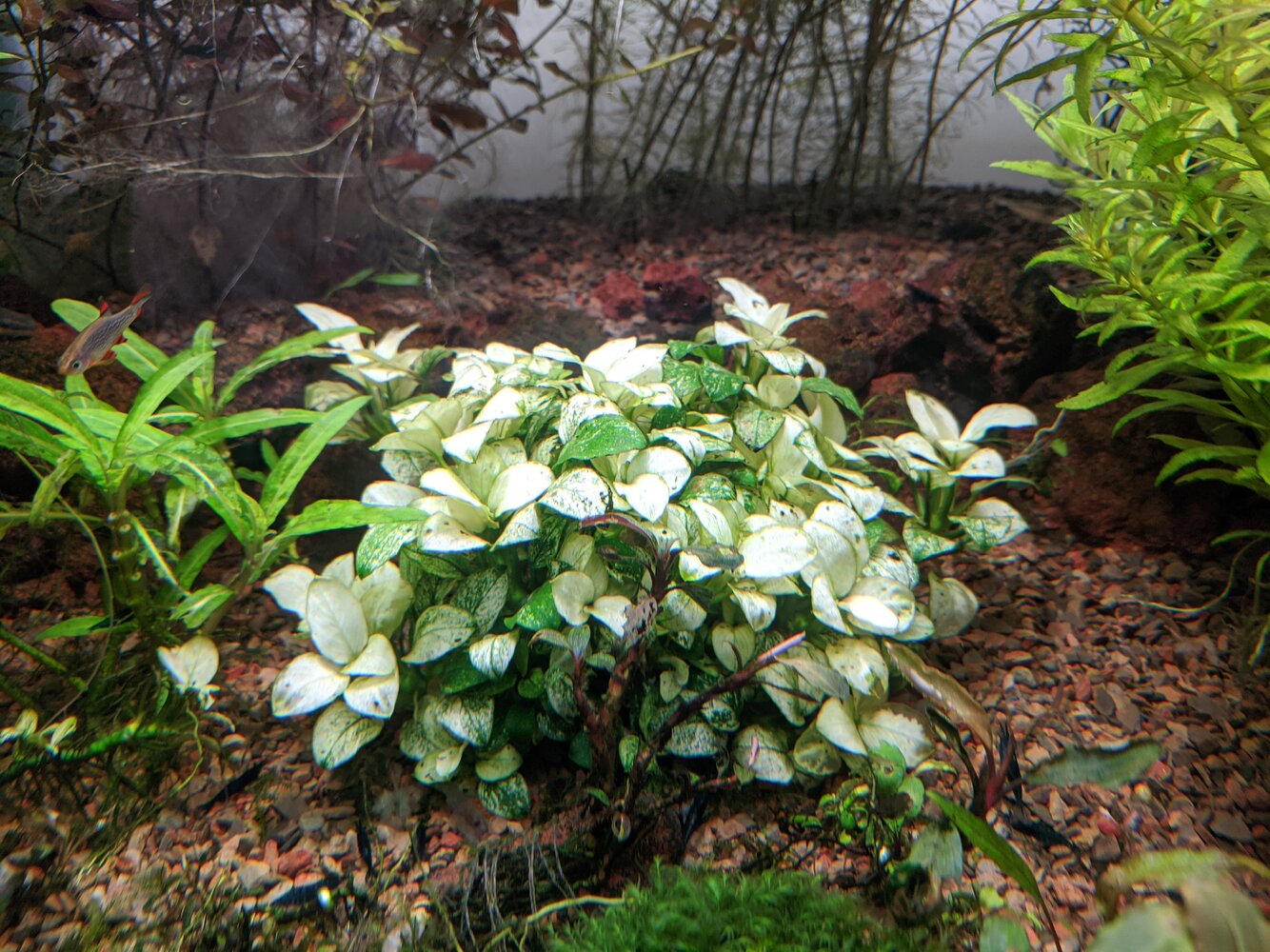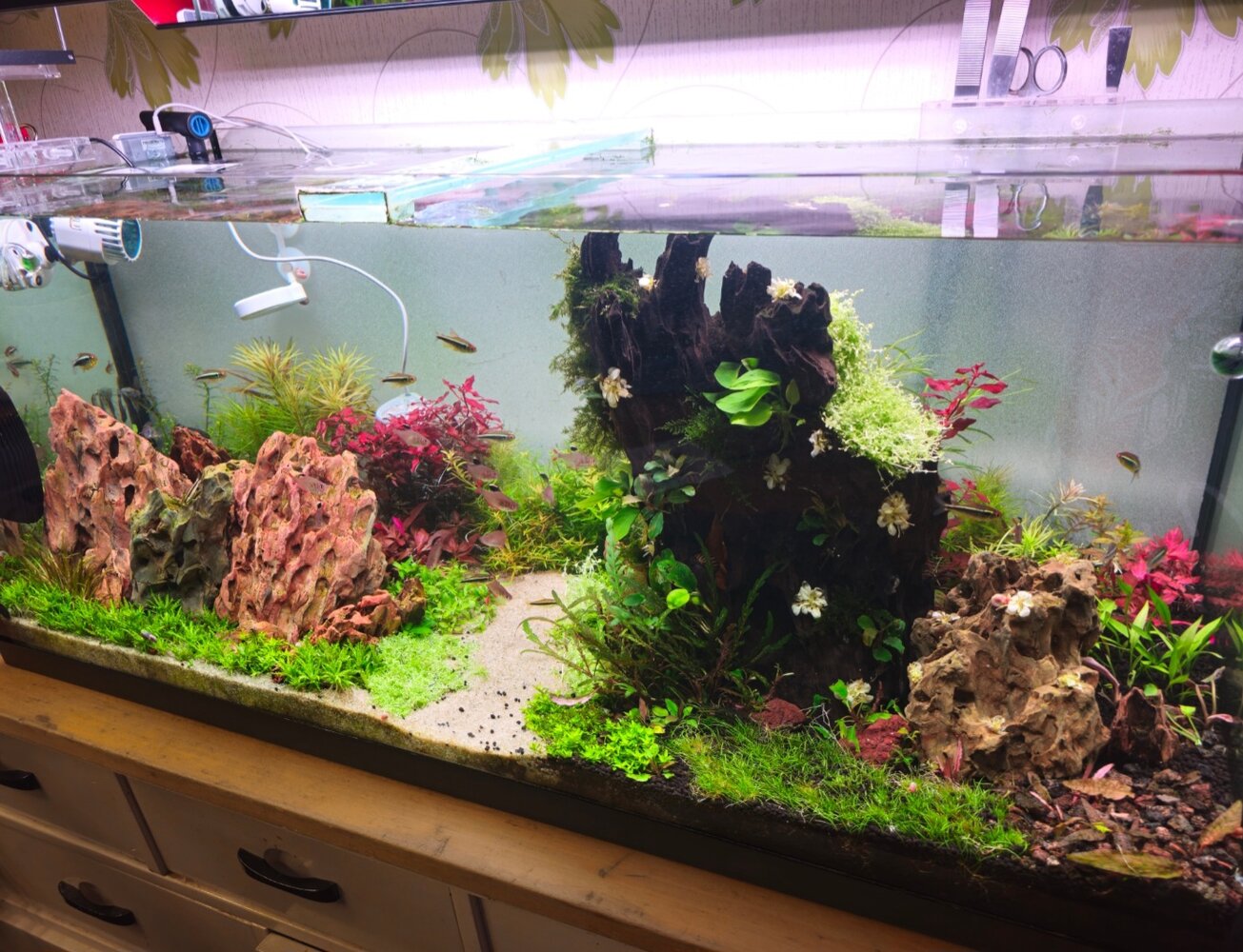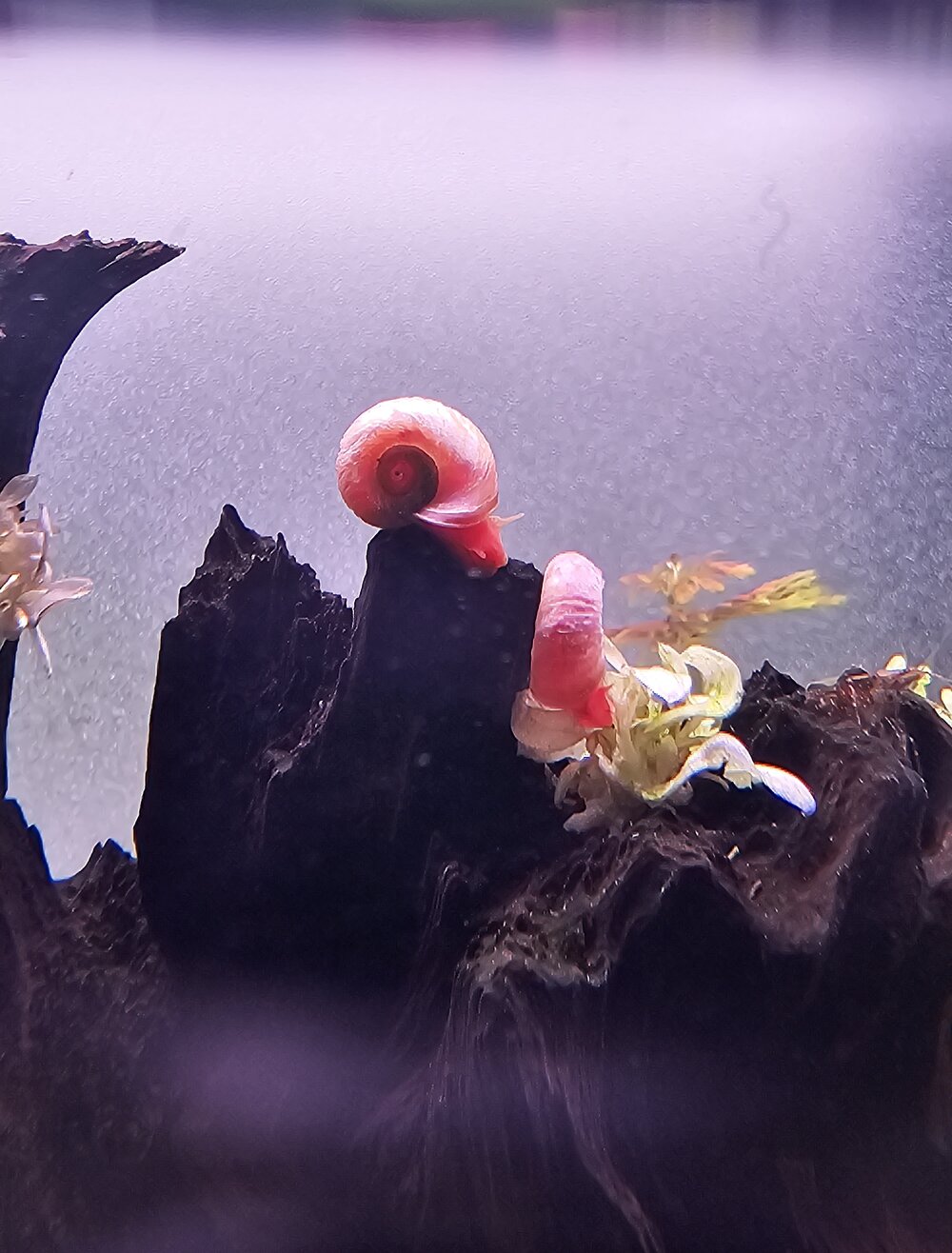Miko€
New Member
Hello experts,
Does anyone of successfully grow this variety? The lack of green color meant this variety has limited chlorophyll to power itself to survive. The rhizome is green though. I looked around I cannot find a non in-vitro stock. This is sold only in-vitro. Just wondering if this only grows in-vitro for a short time but not really in an aquarium set up.
Miko

Does anyone of successfully grow this variety? The lack of green color meant this variety has limited chlorophyll to power itself to survive. The rhizome is green though. I looked around I cannot find a non in-vitro stock. This is sold only in-vitro. Just wondering if this only grows in-vitro for a short time but not really in an aquarium set up.
Miko





